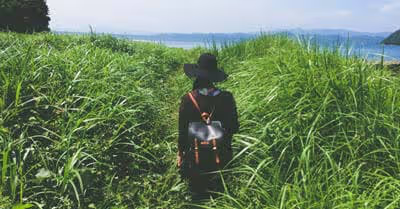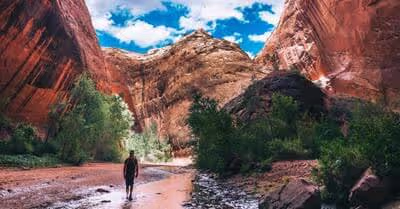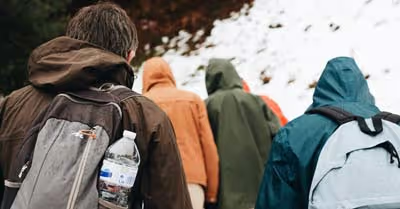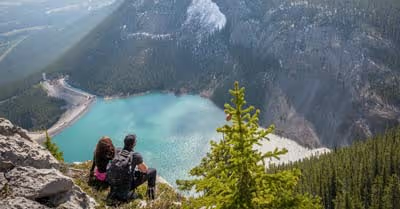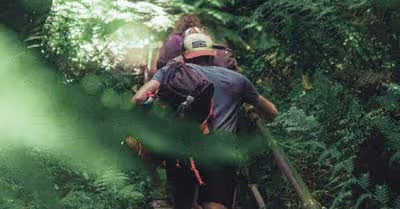Table of Contents
Wear the right clothing
When hiking your clothing needs to reflect your journey. If you are planning on hiking in the summer, you need easy breathing clothing that will keep you cool during the blazing sun. Getting heat stroke or sun sickness is a genuine issue people suffer from when pushing themself too hard in a hot climate. Conversely, when it is cold you need to be wearing enough layers to keep you warm. Getting hypothermia can be catastrophic to your body and leave you permanently disfigured by frostbite. If you find yourself hiking through rain or snow you will need a hardshell jacket with you to keep the elements off your skin. This all needs to be decided ahead of time before you even leave your house. Without the right clothing, you are in for a much harder hike than is necessary. Putting yourself at risk from easily avoidable complications is an unnecessary problem.
No matter the weather, you will need the correct shoes. When hiking it is up to you whether you decide to wear hiking shoes or running shoes. But you must choose one of the two. Open-toed shoes are unsafe and you will strongly regret wearing them after only a short distance. If you are looking to be as safe as possible, hiking shoes are the way to go. They are much sturdier and can be steel toe-capped for extra protection. The trail is littered with rocks and debris that can cause you a lot of pain if you don’t have the correct footwear. Lastly, it is a good idea to bring a hat with you always. Whether it is to protect you from the sun or the rain, you will be glad to have it with you. You can keep it in your pack, it won’t take up much room.
Bring the right items in your pack
Your pack should contain everything you need to keep yourself safe, no matter the weather. Here are some things that need to be carried with you regardless of where you hike, or when:
Compass – map:
A compass and map combo is probably not going to be used on your hike if you stick to the trail. But should you come off the trail, you may need it. These items are small and easily fit in your pack without taking up much room. I’m sure you have a smartphone with both a compass and a map on it, but you cannot rely on that on the trail. What if you lose service, lose your phone, or the battery dies? Keep a real, physical, map and compass with you.
Water:
Water is a must. Without staying hydrated you can run into a plethora of health complications. You should easily be drinking about 16oz of water an hour on a difficult hike. Bring a re-fillable canteen and as much water as you can comfortably carry. If you bring plastic water bottles, make sure you bring them back down with you after the hike. Everything you bring with you on the trail should leave with you.
Small knife:
Having a small tactical knife with you can get you out of a lot of tricky situations. Whether it is used for self-defense or as a tool to assist you, you will be glad to have it. Just some examples of a knifes uses are: Cutting bandages, cutting wood, self-defense, and more. Buy a folding knife or at least a protective cover for it. It is dangerous to walk around with a loose knife in your pack if you fall it could injure you.
Bear spray:
Whether it is to protect you from bears, mountain lions, coyotes or something else; bear spray is the way to go. It is one of the items you can bring that can be the difference between life and death. Hopefully, you never have to use it, but should you need it it will be there.
First aid kit:
Your basic first aid kit from any outdoor store should do. You are mostly looking for bandages, antiseptic sprays, a sling and most of what’s left is just a situational bonus.
Sat-phone:
A sat phone is optional, depending on the length of the hike mostly. If you are only going on a 5 hour round trip hike you probably don’t need a sat-phone. If you are planning on hiking for multiple days you will need one. A sat-phone will ensure your rescue is as soon as possible, in situations where time is of the essence the sat-phone is a lifesaver.
Spare socks:
Spare socks may seem a little silly, but they can save your feet. If your socks become soaked through either from sweat, rain or walking through a river/stream you will want to change your socks. Having wet feet is a huge contributor to blisters and general soreness. If you are hiking in very cold weather wet socks can lead to hypothermia and frostbite on your toes. It is good to have at least one spare pair just in case.
Sun cream/Sun lotion:
The sun can be a killer regardless of the temperature. Anyone who has ever gone skiing or snowboarding can tell you that sunburn is a huge problem. Sun can reflect off snow and burn you incredibly fast if you are not prepared. Don’t be fooled by the cloudy sky, the suns UV rays can penetrate clouds and burn you just as easily as a clear sunny day. Bring some sun protection with you in your pack, just in case.
Plan ahead – Be prepared
Planning is of the utmost importance for keeping yourself safe. It isn’t just as simple as checking the weather forecast to make sure you are going to be wearing the right clothes. You need to plan your route before you set off, to help you keep track of yourself on a map once cell service becomes a nonfactor. What kind of terrain are you going to be crossing? Lots of streams will mean you want to make sure you wear waterproof hiking shoes.
If you are going on a multiday hike, do you have enough food and water? Over long difficult hikes, you will probably need to drink close to a gallon of water a day. Do you have enough food and snacks to keep your energy levels up over the whole journey? Running out of food or water partway through a multi-day hike can be a disaster. You aren’t going to die from starvation, but complications from tiredness and weakness could lead to serious injury. All of this needs to be prepared before you leave.
Where is your trail taking you? If you find you are going to be hiking through bear country you will want to make sure you are prepared for that. Do you have your bear spray, airhorn, and are you yelling “Hey bear!” along the trail to keep the bears away? If not you may find yourself face to face with a grizzly bear, and that is less than ideal.
Let someone know where you are going and how long you think it will take you. This can help alert the relevant people should you go missing. This way people notice you are missing if you are one day late finishing your hike; not a week later when your boss finally gets worried enough to alert the authorities. Just give someone you trust a heads up that you are going on a hike, it will take X amount of days, and they should send help to Y place if they haven’t heard from you in X days time. It could save your life.
Know your limits
Hiking is a great way to get in shape or keep yourself in shape. But it is dangerous. Don’t push yourself too hard so that it becomes unsafe. If you only hike 8 times a year and never for more than a few hours at a time, deciding to go on a 5-day solo hike is not a good idea. Stick within your limits and you will be fine. Build up to that 5-day hike, don’t just jump right in.
Conclusion
Hiking is one of the best pastimes you can have. Being able to immerse yourself in nature can be truly therapeutic. But only if you keep yourself safe. Know what your limits are and stick to them. Make sure your route is planned out, and at least one person knows where you will be. If you plan, bring the right kit in your pack, and wear the correct clothes you will be perfectly safe. Remember to bring everything you take out back with you, good luck in the great outdoors.
Recent Articles



